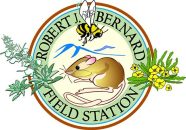Schmid, Andreas K. (2009)
A Mammalian Carnivore Survey of the Robert J. Bernard Field Station.
Bachelor of Arts, Claremont McKenna College, Organismal Biology and Ecology.
Advisor: Dan Guthrie.
The presence and abundance of carnivores, and mesocarnivores, can be effective indicators of ecosystem health. In this study, I surveyed the Bernard Field Station to identify carnivore and mesocarnivore species, as well as determine relative abundance of the carnivores in various areas and habitats within the station. Detection stations were placed at openings in the fence surrounding the Field Station, as well as within different regions and microhabitats within the interior of the field station. Detection stations were constructed using pottery plaster as a substrate, and interior stations were also equipped with an attractant. Tracks were identified, and recorded, from the interior stations daily, and the border stations every other day. A detection index was calculated based on the number of identifications of a species in an area and the total sample effort. Six of eight target species were identified during the survey. Coyote showed the most widespread use of the Field Station suggesting they are the most abundant carnivores on the Field Station. Gray fox, striped skunk, and raccoon also made extensive use of the Field Station. Bobcat and western spotted skunk were also identified. Microhabitat, as well as regional, preferences were also observed for different species. The results demonstrate that the Bernard Field Station supports a range of carnivores and mesocarnivores, including some species that are not often found in small habitat fragments, but also that the persistence of some species may be of concern.
